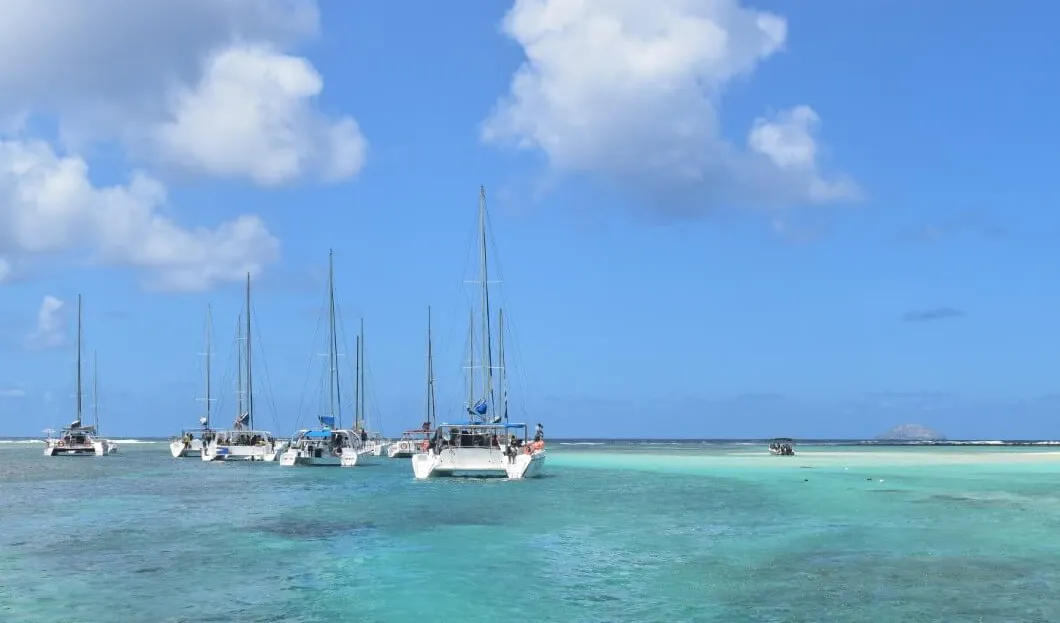
Tourists did not rush to the gate when the Mauritius borders were partially reopened on July 15. With approximately 1,500 reservations until the end of September in the 14 hotels that were opened in Mauritius, this is far from being a marketing success, even if hotel specialists had already anticipated it.
It is probably necessary to wait for the real start on October 1st when the vaccinated tourists will be spared from the quarantine which should boost the Mauritius tourism sector. However, questions remain. Notably on the objectives in terms of arrivals as well as tourism revenues while the main competitors of Mauritius in this region, Seychelles and the Maldives, are already ahead of the game.
The estimate of the number of visitors is 650,000 tourists within the next 12 months, but specialists have not finished discussing the issue, insisting on the optimistic nature of this objective. This is at a time when Mauritius' main European source markets are still suffering from the economic effects of prolonged confinement due to the Covid pandemic and are already facing the risks of a new wave that may require further restrictions.
Statistics Mauritius released two growth forecasts, published on June 28 and June 30 respectively – these are two versions of the national accounts based on two different tourist arrival figures. In the first case, Statistics Mauritius had forecasted a growth rate of 4.4% in 2021 based on tourist arrivals of approximately 150,000 to 160,000 for the current calendar year. A document disappeared from the organization's website and was replaced 48 hours later by a second one with statistics considered to be rather close to those issued in the last National Budget. That is, a growth of 5.4% in 2021 and the arrival of 325,000 tourists for the same period.
In the Ministry of Finance's entourage, the first version of the national accounts, prepared internally by Statistics Mauritius, is not expected to be published and is more of a worst-case scenario for the economy. Still, these growth projections, even after being upgraded, are contested and are far from the 9% growth forecast for the fiscal year 2021-22, which is mainly driven by recovering tourism industry.
Bhavik Desai, a financial analyst at Axys Group's research arm, shares the finance ministry's optimism, particularly its projection of 650,000 tourists in the next 12 months. In his report published on July 15, he argues that Mauritius can potentially welcome up to 623,000 tourists in the next 12 months from the first phase of reopening. At the same time, in 15 months following the reopening, the country will generate tourism revenues of Rs 28 billion and Rs 41 billion respectively.

Full Opening of Air Access
To arrive at these figures, Axys Research used an economic assumption that favors historical seasonality of the main tourist source markets and the current vaccination rate in the country to calculate tourist arrivals while ensuring that air connectivity would not be interrupted. "It will be necessary to count between 3 and 4 flights per day during the first phase of reopening and then gradually increase to 6 to 8 flights daily. This is less than the average of 15 flights per day as was the case before the Covid-19 crisis," said Bhavik Desai.
Kevin Teeroovengadum, who sits on the boards of a number of hotels, argues that the Ministry of Finance's objective could be achieved on one condition, namely the adoption by the civil aviation authorities of a policy of fully open-air access. Two Indian Ocean islands, namely Seychelles and the Maldives, have adopted this policy and are currently experiencing a strong recovery in their tourism sector. "The Maldives recorded 100,000 arrivals per month at the beginning of the reopening of their borders. Today they have 600,000 tourists and will reach almost 1.3 million by the end of the year. Seychelles opened its borders last March with 50% fewer tourist arrivals, but they ended up with the same revenue as in 2019 by counting on high-spending tourists," analyzes Kevin Teeroovengadum.
He says the commercial success of these two destinations is due to a single factor: the presence of a myriad of airlines, even low-cost airlines such as Fly Dubai, to serve them. Bottom line, they're all there: Emirates, Qatar Airways and Etihad, among others.
However, other issues must be taken into account. In fact, all international agencies, from the IMF to Moody's and the World Bank, are categorical: it will take until 2024 for this industry to recover its pre-crisis level of 2019. The reason given is that the health situation in the countries from which tourists travel, coupled with the restrictions imposed on travel, will continue to impact their tourism industry. The situation is further complicated by the fact that South Africa, which remains a major tourist destination, is facing a social crisis with an outbreak of violence that may dampen the enthusiasm of its tourists to travel.
In a recent report, Moody's reminds us how Mauritius tourism activity will continue to lag behind the national economy for a long time to come. This is due to changes in traveler behavior that favor short-haul destinations over long-haul ones. As a result, the economic impact of Covid-19 has eroded the purchasing power of potential visitors due to high unemployment and lower-income levels in Mauritius' prime tourist markets. At the same time, the debt levels faced by international airlines could lead to them ceasing to serve the Mauritian destination.
All in all, summer is likely to be less hot this year with the recovery in the Mauritius tourism sector highly uncertain and dependent on the roll-out of the current vaccination campaign. In the meantime, other factors may affect the industry's ability to generate growth and tourism revenues. In particular, if the European clientele, which contributes 58% of the total number of arrivals in 2019, decides to favor domestic tourism, in the face of a new epidemic wave in Mauritius with the 1,000 active cases mark already exceeded, leading to a third lockdown.









